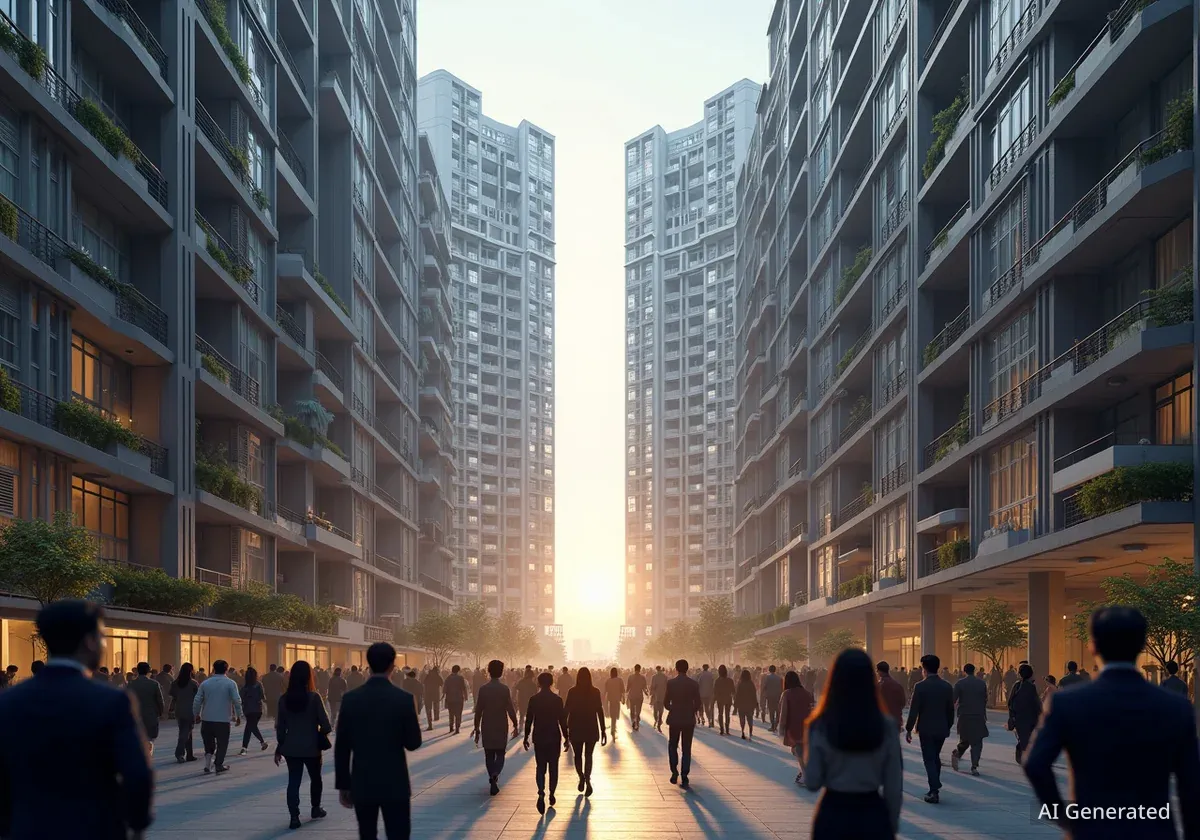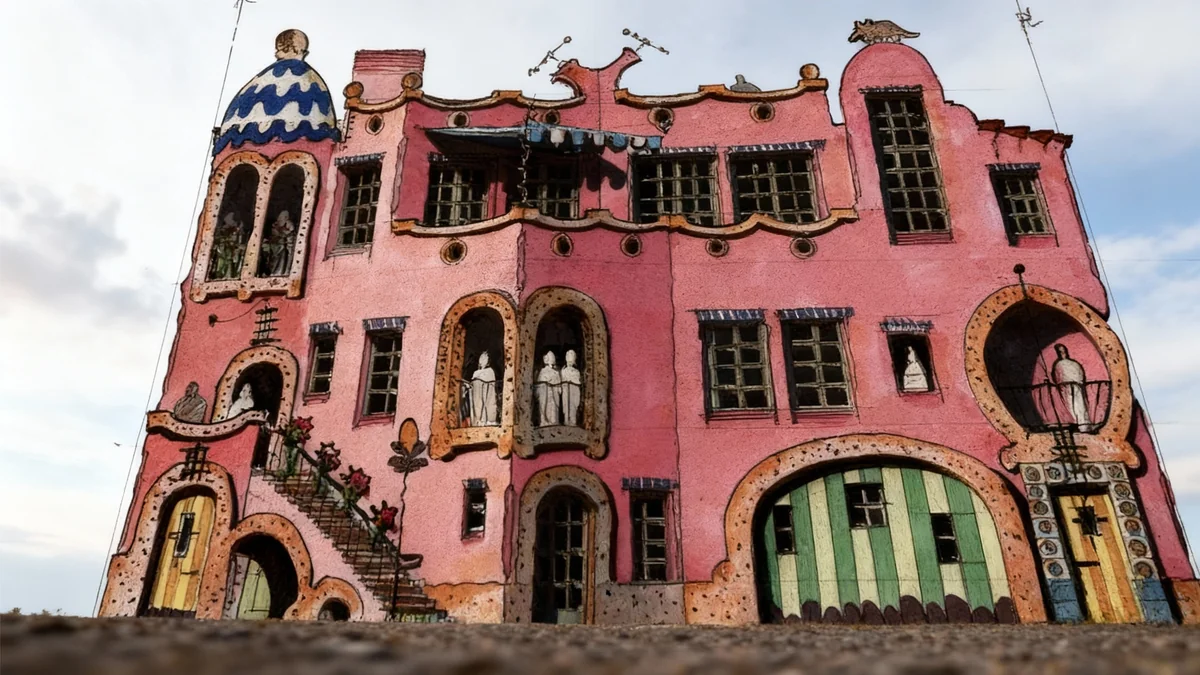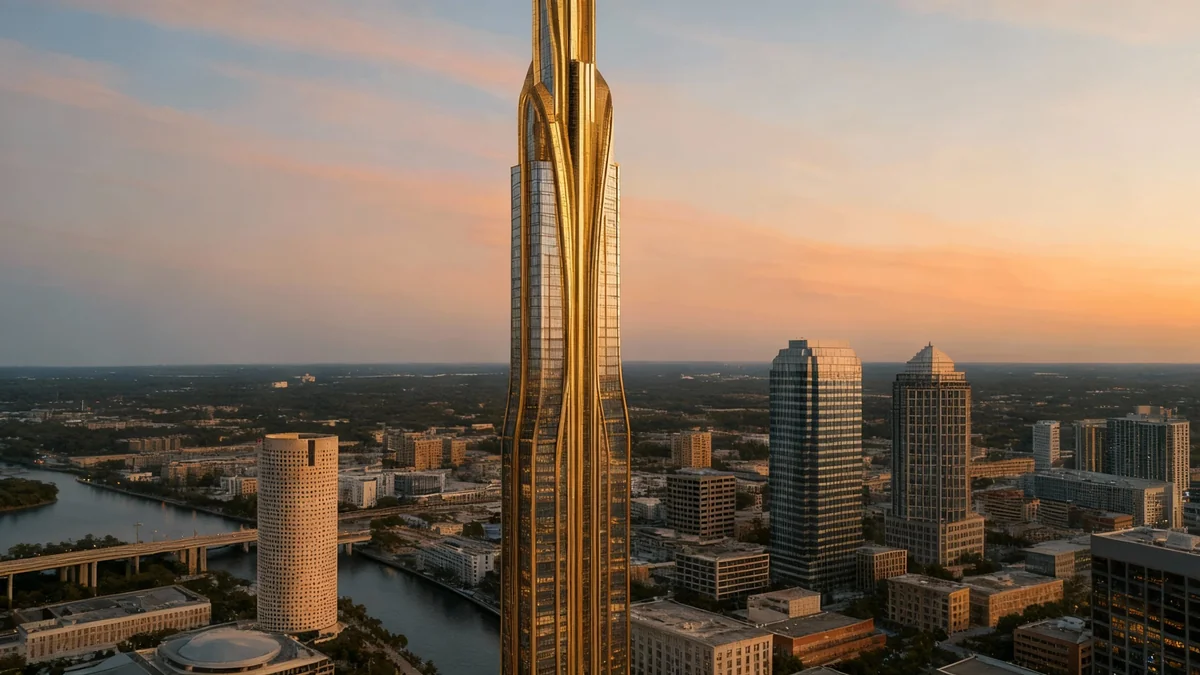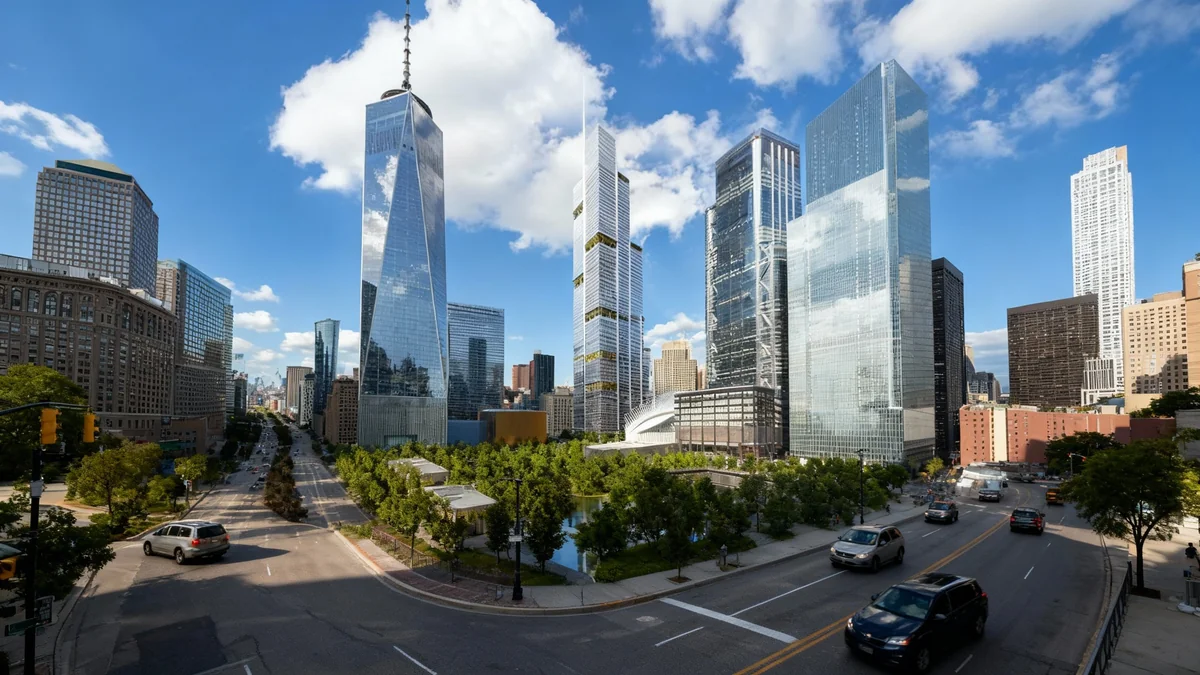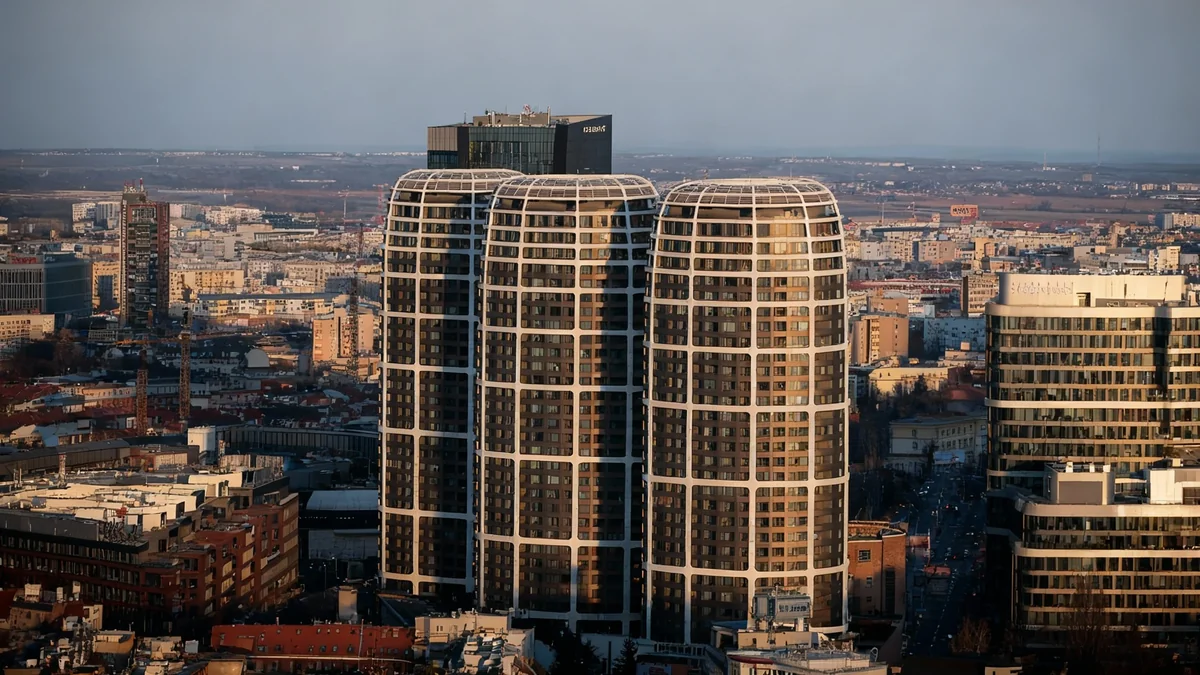A massive apartment complex in Hangzhou, China, known as Regent International Apartment, has gained global attention for its immense scale and unique living environment. This S-shaped building is home to an estimated 20,000 residents, making it one of the most densely populated single structures in the world. Located in Qianjiang Century City, Hangzhou’s central business district, the complex offers a self-contained lifestyle where occupants can theoretically access all necessary services without leaving the building.
The Regent International Apartment complex is a striking example of modern urban development. Its design and facilities cater to a large population within a single structure. This approach to residential living combines thousands of private homes with a wide array of public amenities, creating a micro-city environment.
Key Takeaways
- Regent International Apartment in Hangzhou houses 20,000 residents.
- The building is 675 feet tall and contains 5,000 apartments.
- It offers extensive facilities, including a food court, supermarkets, and salons.
- Originally designed as a six-star hotel, it now serves as a residential complex.
- Rental costs range from $210 to $570 per month.
Structure and Scale of Regent International
The Regent International Apartment complex is an architectural marvel. It stands 675 feet tall and encompasses 260,000 square meters of space. The building features an distinctive S-shape, making it easily recognizable within the cityscape of Hangzhou.
Inside, the complex contains approximately 5,000 individual apartments. These residences vary significantly in size and layout. Some are compact studio units, suitable for single occupants. Others are larger, multi-room apartments designed for more residents. This variety allows for different living arrangements within the same structure.
The sheer number of residents, estimated at 20,000, highlights the building's capacity. This population density within a single building is a notable characteristic, setting it apart from typical residential developments globally. The complex has become a point of interest for urban planners and social media users alike.
Building Facts
- Height: 675 feet (approximately 206 meters)
- Apartments: 5,000 units
- Total Area: 260,000 square meters
- Estimated Population: 20,000 residents
Amenities for Self-Sustained Living
One of the most remarkable aspects of the Regent International Apartment is its extensive range of internal facilities. These amenities are designed to meet nearly every daily need of its residents. This means people living there can often find everything they require without ever stepping outside the building.
The complex includes a large food court, offering various dining options. For personal care, there are barber shops and nail salons. Residents can also access medium-sized supermarkets for groceries and daily necessities. Recreational facilities include swimming pools, providing options for exercise and leisure.
Beyond these, the building also houses internet cafes, catering to digital needs and social interaction. The availability of such diverse services within one structure creates a comprehensive living environment. This concept reduces the need for external travel, making it a highly convenient option for many.
"The building offers space for people to live, work, and socialize, meaning theoretically, occupants need never leave the complex."
Design Origins and Current Use
The Regent International Apartment was designed by Alicia Loo. She is also recognized as the chief designer of the Singapore Sands Hotel, which is known as the world’s second seven-star hotel. Initially, the Hangzhou complex was conceived as a six-star hotel itself. However, its purpose evolved during development.
Today, the building functions as a residential complex. It attracts a specific demographic, particularly students, recent graduates, and young professionals. Its location in a central business area and its self-contained nature appeal to those seeking convenience and affordability in a bustling city.
Background Information
Hangzhou is a major city in China, known for its economic development and technological innovation. Qianjiang Century City is a modern business district within Hangzhou, characterized by new high-rise buildings and commercial hubs. The Regent International Apartment fits within this urban landscape, offering a unique residential solution for its growing population.
Cost of Living and Social Media Recognition
Living in the Regent International Apartment offers varied pricing options. According to local news sources, smaller apartments, particularly those without windows, typically rent for around 1,500 RMB per month. This converts to approximately $210 USD. This price point makes them accessible for students and young professionals.
Larger properties within the complex, which often include balconies, are available for about 4,000 RMB per month. This is equivalent to approximately $570 USD. These prices are significantly lower than rental costs in major Western cities. For example, reports from Apartments.com indicate that the average monthly rent in New York City exceeds $4,000.
The building has also achieved viral status on social media platforms, especially TikTok. Videos showcasing the building's immense size and its internal facilities have garnered widespread attention. Drone footage, like that shared by user @fatheristheone, often highlights the structure's scale, impressing viewers with its unique characteristics and the sheer number of people it accommodates.
- Small apartments (without windows): Approximately $210 per month
- Larger apartments (with balconies): Approximately $570 per month
The combination of affordable living and comprehensive amenities makes the Regent International Apartment a notable example of modern high-density urban housing. Its popularity on social media also reflects public fascination with large-scale architectural projects and innovative living solutions.
Implications for Urban Living
The Regent International Apartment complex represents a particular model of urban living. It demonstrates how a single building can integrate residential, commercial, and recreational functions. This vertical city concept aims to minimize travel and maximize convenience for residents. It also offers a potential solution for housing large populations in densely packed urban centers.
While offering many benefits, this type of living also raises questions about community interaction and reliance on external urban spaces. The ability to live, work, and socialize within one building changes traditional urban patterns. It highlights a trend towards more self-contained communities in rapidly developing cities.
The success and popularity of Regent International Apartment suggest that such integrated living spaces are becoming increasingly attractive. As urban populations continue to grow, designs that offer comprehensive services within a single structure may become more common. This approach could influence future architectural and urban planning strategies globally.
